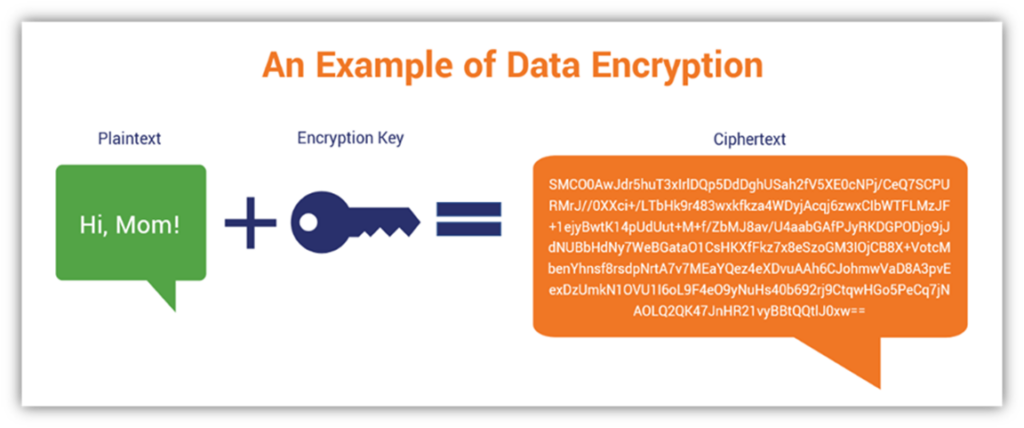In today’s digital era, encryption keys forge the unbreakable conduits through which sensitive data traverses the vast expanse of the internet. As the guardians of information integrity, these cryptographic essentials warrant meticulous attention regarding their storage—a matter of paramount importance as the ramifications of mismanagement can culminate in nefarious data breaches. How and where encryption keys are stored safely not only affects individual users but resonates throughout entire organizations and the vast matrix of our interconnected world.
The Nature of Encryption Keys
Encryption keys are essentially strings of data, employed in cryptographic algorithms to encode and decode information. Their primary function is to ensure confidentiality, integrity, and authenticity within digital communications. There are two predominant types of encryption keys: symmetric and asymmetric. Symmetric keys utilize the same key for both encryption and decryption processes, while asymmetric keys deploy a pair of keys—public and private. Understanding this foundational premise is critical as it lays the groundwork for comprehending the intricate framework surrounding key storage methodologies.
Risks Posed to Encryption Keys
Recognizing where and how to store encryption keys is intrinsically linked to an understanding of the potential risks that could jeopardize their integrity. Data breaches and cyber-attacks are prevalent, often employing techniques such as keylogging or brute force attacks to access these valuable keys. Furthermore, carelessness in key management—such as hardcoding keys into application source code or utilizing inadequate protection mechanisms—invites disaster, eroding the cornerstone of confidence upon which data security rests.
Safe Storage Solutions for Encryption Keys
Securing encryption keys involves implementing a combination of sophisticated methods and technologies. The following strategies elucidate the primary modalities through which organizations can ensure the safekeeping of their cryptographic keys:
1. Hardware Security Modules (HSMs)
Hardware Security Modules represent one of the most robust solutions for encryption key management. These physical devices are specifically engineered to safeguard cryptographic keys from unauthorized access and tampering. HSMs deliver a secure environment enabling cryptographic operations while storing keys in a manner that is both safe and compliant with various regulatory frameworks. HSMs operate under strict regulations, ensuring that encryption keys never leave the device unencrypted—thereby enhancing their protection multifold.
2. Key Management Systems (KMS)
Key Management Systems are software-based solutions designed to facilitate and automate the generation, storage, and rotation of encryption keys. KMS can be integrated with cloud services or on-premises solutions, sometimes leveraging HSMs for enhanced security. Implementing a KMS incorporates features like role-based access controls (RBAC), audit trails, and automated key rotation policies, thereby ensuring reduced vulnerability to attack vectors while streamlining the operational workflow.
3. Secure Enclaves
Secure enclaves leverage the principle of trusted execution environments (TEEs) to protect sensitive data, amalgamating hardware and software solutions. This method ensures that encryption keys can only be accessed by authorized applications while operating in an isolated environment. The innovation lies in their ability to execute code and process sensitive data without exposing it to the broader system, effectively minimizing potential points of exploitation.
4. Cloud-Based Key Management
As organizations increasingly migrate to cloud infrastructures, cloud-based key management solutions have emerged as a practical alternative. They offer scalable and flexible environments for storing and managing encryption keys. Managed by cloud service providers, these solutions benefit from inherent redundancy and geographical distribution, ensuring that keys remain secure regardless of physical location. Nevertheless, entrusting an external entity necessitates a comprehensive understanding of the provider’s security measures and compliance certifications.
5. Paper Key Backups
For those inclined toward traditional methodologies, creating paper backups of encryption keys can serve as an additional safeguard. However, this method should be approached with caution; it is imperative to draft these backups in secure locations, free from prying eyes and environmental hazards. Maintaining physical copies brings an element of redundancy, albeit in a more cumbersome form, and should be part of a larger strategy that incorporates digital and physical security protocols.
Best Practices for Key Management
Regardless of the storage mechanism in use, adhering to best practices is crucial for maintaining encryption key integrity:
- Regular Rotations: Periodically changing keys mitigates risks stemming from key exposure. This practice involves deprecating old keys and distributing new ones through established channels.
- Access Control: Implementing strict access controls ensures that only authorized personnel can interact with cryptographic keys. Multilayered authentication systems add an additional layer of security.
- Audit Trails: Monitoring and logging access to encryption keys enables organizations to trace activities, delineating who accessed what, when, and why; this serves both security and compliance purposes.
- Data Encryption: Employing encryption even in the storage of encryption keys establishes a failsafe; if keys are compromised, their cryptographic nature can still guard the cardinal data they protect.
Conclusion
In a world increasingly defined by data, safeguarding encryption keys through methodical, strategic storage practices is not merely advantageous—it’s essential. Understanding the multifaceted techniques available for secure key storage unveils new paradigms in information security, transforming how organizations think about data protection. With data breaches perpetually looming, the quest for safe encryption key storage represents a proactive mission, propelling the dialogue around digital security into new spheres of awareness and vigilance.








Leave a Comment